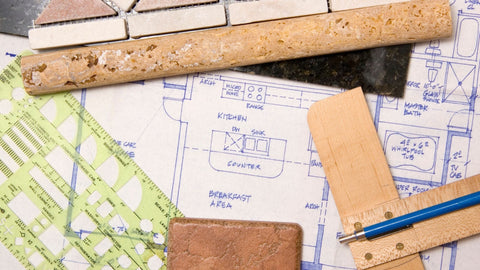Ever thought a small home renovation could turn into a big financial problem? Yeah… been there. Many home remodeling mistakes snowball into expensive fixes that make you whisper. Please note that number. In this article, I’ll walk you through the most common missteps I see on projects and how to avoid them—so you can keep your sanity and your budget. We’ll cover planning, realistic costs, layout choices, and bathroom picks like shower doors and faucets. If you want sleek style without the headaches, stick with me.
We’ll talk about the importance of careful planning and what essentials you really need. That absolutely includes details like a single hole faucet bathroom if you’re chasing a clean, modern sink setup, and smart bath choices like tub doors that stop splashes before they become a floor repair. You’ll learn how to improve your home while saving time and money—without getting stuck in decision quicksand.
Key Takeaways
- Planning is key to avoiding costly renovations.
- Staying within budget means honest, accurate cost estimates.
- Function over trends keeps your design useful for years.
- Lean on experts when needed—saves money in the long run.
- Choose quality over the cheapest option to avoid rework.
Understanding the Importance of Planning Your Home Remodeling
Planning your home remodel is the difference between smooth sailing and… why is there a hole in the ceiling? A good plan covers the path from demo day to final clean. Without it, you’ll meet delays, surprise costs, and frustration.
Having a clear plan helps you visualize the result and make smarter choices. You can pick materials, spot weird fit issues early, and set deadlines that actually work. When I first started, I once measured a vanity wrong by an inch. One inch. That silly mistake cost me two days and a re-order fee. After that, I triple-check—then I check again, because I like sleeping at night.
Spend real time upfront. It feels slow, but it’s the fastest way to a remodel you actually love.
Common Home Remodeling Mistakes
Underestimating Costs and Budgeting Inaccuracies
One big mistake? Underestimating costs. Research materials and labor before you swing a hammer. Get multiple quotes. Build a realistic cost breakdown with line items—labor, materials, permits, haul-away, the whole thing. Always include a 10–20% contingency for unexpected expenses because surprises happen. (They always do.)
Rushing the Design Process
Rushing design is how you end up with a gorgeous space that’s weird to live in. Slow down. Test the layout on paper. Walk it in your head—where does the door swing? Can two people pass in the kitchen without hip-checking? Pick finishes you’ll still like next year, not just this Friday.
Starting Renovations Too Soon
Starting too soon—before you’re ready financially or emotionally—creates chaos. Ask: Do I have the budget, time, and backup plan if something runs long? If the answer is “maybe,” it’s actually “not yet.” A little patience now beats a mid-project panic later.
Overestimating Your Renovation Budget
How to Create a Realistic Budget
Break your budget into categories: labor, materials, fixtures, permits, and contingencies. Research local prices and compare contractor quotes on an apples-to-apples basis. If your numbers feel soft, they are—tighten them. Clear budgets reduce stress and help you say yes or no faster.
Preparing for Unexpected Costs
Renovations always have “oh wow” moments—behind-the-wall plumbing, out-of-code wiring, a subfloor that looks like cornflakes. Keep that 10–20% buffer so you can handle issues without derailing the whole plan.
Focus on Functionality Over Trends
Trends come and go, but daily life sticks. Choose a layout that fits your routine and materials that last. For example, people love sleek glass doors—me too—but they’ve got to match the room’s footprint and your cleaning tolerance. Take shower doors as an example: beautiful, space-opening, but best when sized and styled to the actual bathroom, not the Pinterest board.
- Determine your primary needs and design around them.
- Invest in durable materials that match your lifestyle.
- Balance beauty with usability so it works on day 1,000 like day 1.
Home Remodeling Mistakes to Avoid When Designing Bathrooms
Choosing the Wrong Shower Door Options
Shower doors carry a significant visual weight. Glass can make a small room feel larger and more upscale, but consider the trade-off between swing and slide, and where the water actually goes. If you want a clean, modern look, a shower with glass doors can be perfect—just size it right and mind the hardware finishes so they play nice with your faucet and lighting.
Not Considering Practical Needs in Bathroom Layouts
Map your daily flow: where you towel off, where the hair dryer is located, and whether you prefer a bench. Keep clearances comfortable. And in tight rooms, bathroom glass shower doors that slide can save precious inches, which matters more than you think on cold mornings.
Not Hiring Qualified Professionals
Using unqualified labor initially appears cheaper, but it isn’t. Hire licensed pros with references you can call. Ask about similar projects, timelines, and how they handle surprises. You’re not just buying labor—you’re buying judgment.
The Impact of Choosing the Lowest Bid
Why Quality Matters in Home Renovations
Lowest bids often cut corners on materials or time. Quality contractors cost more because they plan, protect, and finish right. That means straighter tile lines, tighter plumbing, and fewer callbacks. Your house—and your future self—will thank you.
Conclusion
Home remodeling takes planning, patience, and a little humility. Build a real plan, budget for the curveballs, and prioritize function. Choose fixtures you love and can maintain. If you want less splash drama over a tub, a bathtub shower door is a tidy upgrade. And when you’re streamlining the sink, go sturdy and straightforward—no one regrets easier cleaning.
About ANZZI
At ANZZI, the focus is modern design, everyday durability, and that subtle touch of luxury that makes you smile in the morning. From bold finishes to minimalist lines, their collections cover the whole bathroom—faucets, doors, surrounds, and more. If you’re chasing a cool, contemporary sink setup, pairing a clean single-hole with a durable finish like a brushed nickel faucet is an easy win. And for soakers at heart, exploring freestanding tub faucets and bathing ergonomics can turn an ordinary bath into an actual nightly ritual.
FAQ
What types of shower doors are recommended for small bathrooms?
For small bathrooms, clear glass helps the room feel larger. Sliding and bi-fold designs save swing clearance. If you want a high-end look that still plays nice with tight layouts, explore bathroom glass shower doors designed to fit standard openings and hardware finishes.
How do I choose the right faucet for my bathroom?
Match faucet style to your sink and counter drillings, then pick the finish you can live with daily. Single-hole setups are clean and easy to wipe down, while widespread setups give a classic vibe. If you love warm, modern tones, consider durable options that complement your lighting and hardware; many homeowners opt for a brushed nickel faucet for a timeless, low-glare look.
Are bathtub shower doors necessary?
They’re not required, but they’re practical. Tub doors stop splashes, cut down on certain mildew, and look streamlined. If your family bath sees daily use, a quality bathtub shower door keeps moisture where it belongs—inside the tub.
What are the benefits of a wall-mounted bath faucet?
Wall-mounted faucets clear counter space, simplify cleaning, and let you set the spout height exactly where you want it. They also look modern (and a little luxe). If that’s your aesthetic, a streamlined wall mounted bath faucet pairs beautifully with vessel sinks and clean backsplashes.
What should I consider when selecting a shower surround?
Think durability, maintenance, and style. Acrylic panels are light and easy to clean; tile offers texture and color but needs grout care. Start with a solid, waterproof system and pick a pattern you’ll like when coffee hasn’t kicked in yet—a reliable shower surround makes daily upkeep simple.
How can I prevent water leaks in my shower?
Check seals and caulk regularly, and replace anything cracked or lifting. Use quality waterproofing during install (membranes matter). Sloped pans, tight hardware, and properly sized doors make a huge difference over time.
What features should I include for a functional bathroom layout?
Plan for storage near where you use things: drawers by the sink, shelves near the shower, and hooks where towels are actually stored. Leave comfortable pathways and mind door swings. Good lighting layers—ambient, task, and a little accent—make the room feel finished.
Why is hiring qualified professionals important for bathroom remodeling?
Qualified pros follow local codes, protect your home, and solve problems before they become messes. They also help you choose better details the first time, which saves money. If you need specialty work, hire the specialty plumbers for plumbing, tile setters for tile. Your future self will be very, very happy.



